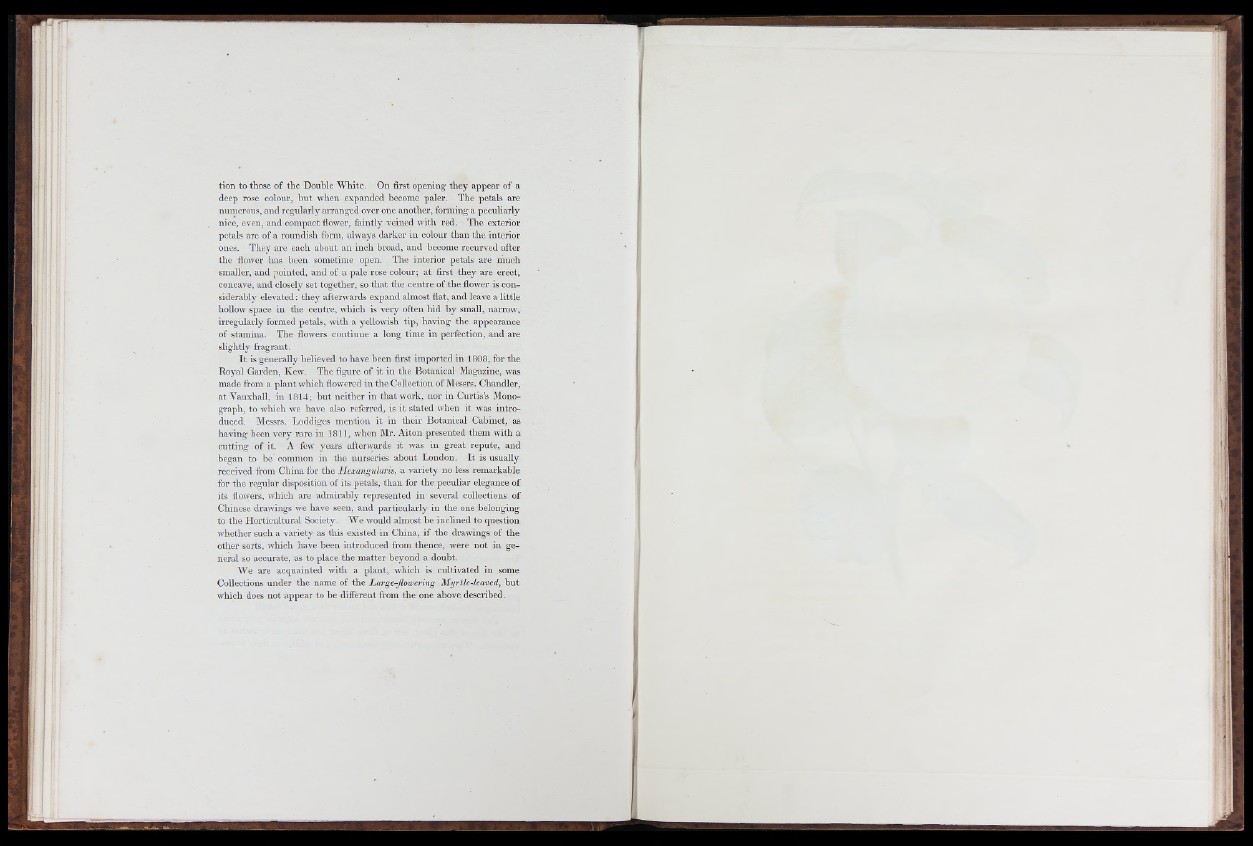
tion to those of the Double White. On first opening they appear of a
deep rose colour, b u t when expanded become paler. The petals are
numerous, and regularly arranged over one another, forming a peculiarly
nice, even, and compact flower, faintly veined with red. The exterior
petals are of a roundish form, always darker in colour than the interior
ones. They are each about an inch broad, and become recurved after
the flower has been sometime open. The interior petals are much
smaller, and pointed, and of a pale rose colour; a t first they are erect,
concave, and closely set together, so th a t the centre of the flower is considerably
elevated: they afterwards expand almost flat, and leave a little
hollow space in the centre, which is very often hid by small, narrow,
irregularly formed petals, with a yellowish tip, having the appearance
of stamina. The flowers continue a long time in perfection, and are
slightly fragrant.
I t is generally believed to have been first imported in 1808, for the
Royal Garden, Kew. The figure of it in the Botanical Magazine, was
made from a plant which flowered in the Collection of Messra. Chandler,
a t Vauxhall, in 1814; b u t neither in th a t work, nor in Curtis’s Monograph,
to which we have also referred, is it stated when it was introduced.
Messrs. Loddiges mention it in their Botanical Cabinet, as
having been ve ry rare in 1811, when Mr. Aiton presented them with a
cutting of it. A few years afterwards it was in great repute, and
began to be common in the nurseries about London. I t is usually
received from China for the Hexangularis, a variety no le ^ remarkable
for the regular disposition of its petals, than for the peculiar elegance of
its flowers, whicli are admirably represented in several collections of
Chinese drawings we have seen, and particularly in the one belonging
to the Horticultural Society. We would almost be inclined to question
whether such a variety as this existed in China, if the drawings o f the
other sorts, which have been introduced from thence, were not in general
so accurate, as to place th e matter beyond a doubt.
We are acquainted with a plant, which is cultivated in some
Collections under the name of the Large-flowering Myrtle-leaved, but
which does not appear to be different from the one above described.